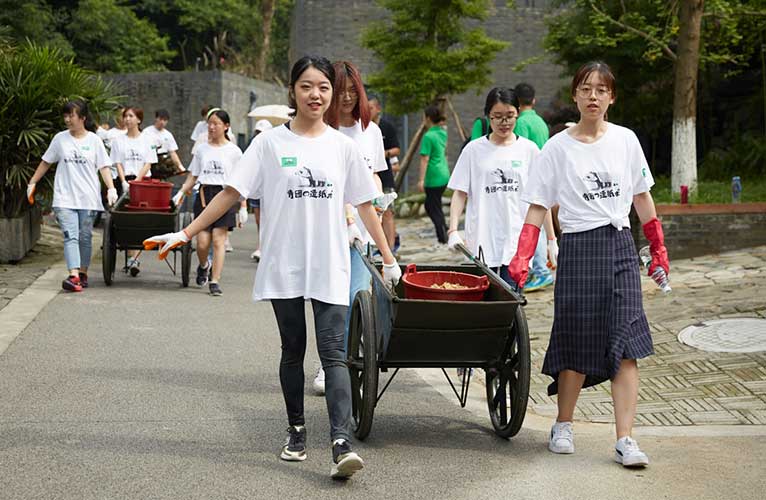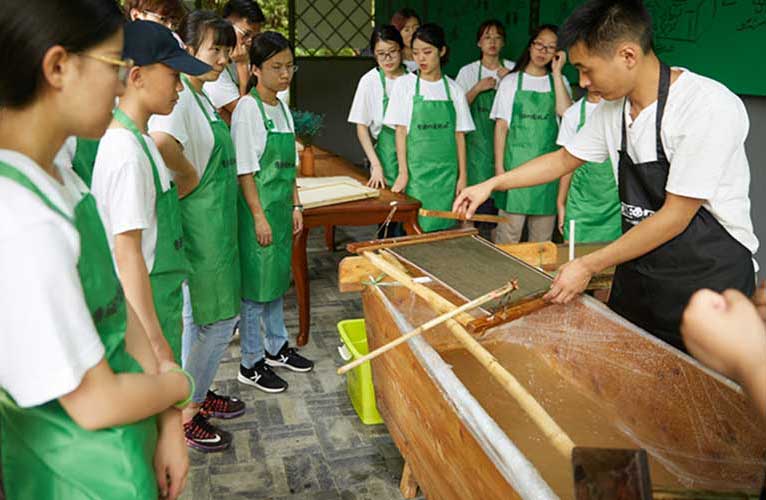Panda Feces Papermaking
Panda feces is not only a great material for traditional papermaking, but also a key to unlock the mystery of giant pandas, their digestion, intestinal structure. This is also a good opportunity to know Chinese traditional papermaking and experience the process in person.
- Location: Dujiangyan Panda Base
- Duration: 1 day
- Availability: All year round
- Age: 12-60 (Participants who are under 18 must be accompanied by guardians or the elder capable and healthy enough)
- Number of Volunteers: 6 or above
- Type: Tailor-made
What is panda feces papermaking and why?
Panda feces can be recycled to make papers. Panda’s digestive tract is very short and most of the food has not been fully digested. And 99% of their food is bamboo which is one of the most common raw materials for traditional papermaking. Pandas usually take in the sugars in bamboos and let go of those fibers. Panda feces are air dried and bamboo fibers and fragments are then used to make papers.
The advantage of panda feces papermaking over the traditional bamboo papermaking is that pandas have used their body to replace the long process of raw material fermentation and sugar degradation in the old way.



Steps for panda feces papermaking
Step 1: Collect panda feces, sort out recyclable contents, clean and dry up in the open air.
Step 2: Mix dried panda feces and quick lime, and put into bags. Steam for 12 hours with burning fire until the smell of grass comes out, and then fish out.
Step 3: Stir the paper pulp to floating floccules, and fish out using a paper screen until a thin layer has been shaped on it. This the most challenging step in making a piece of quality paper. Doing it right, you’ll have the panda feces paper ready.


